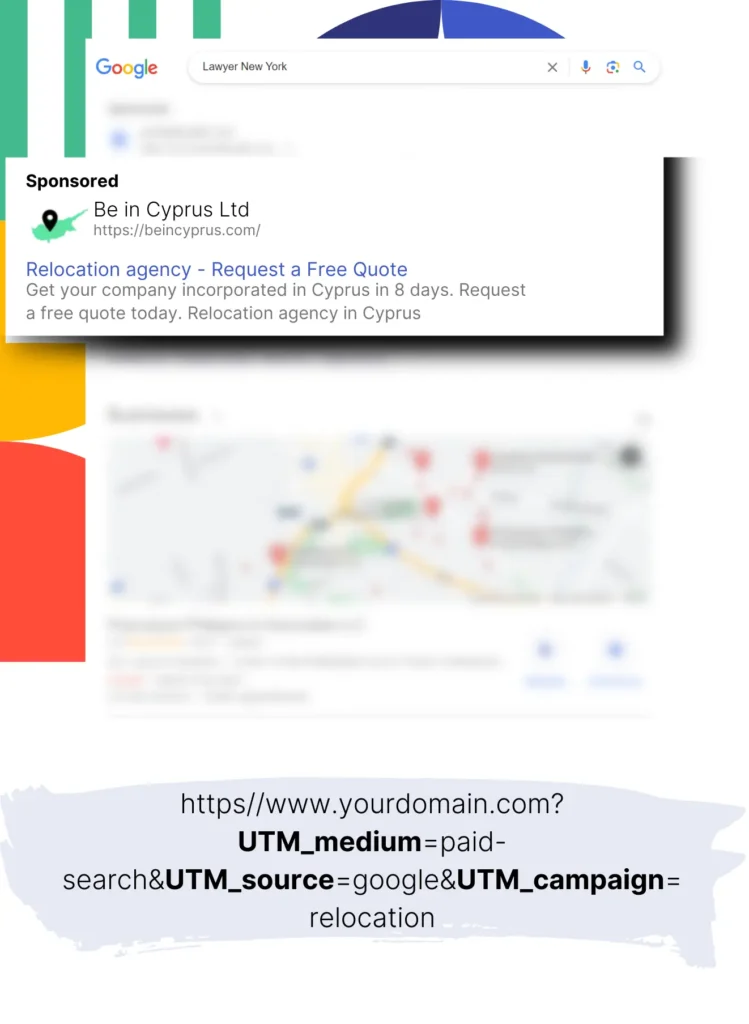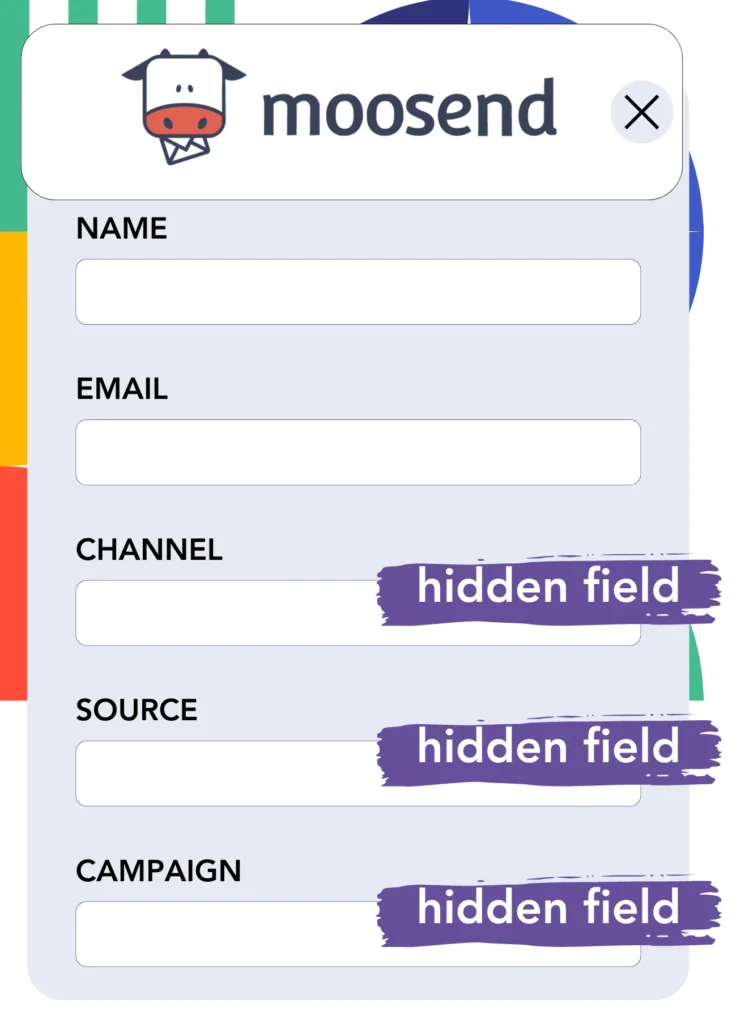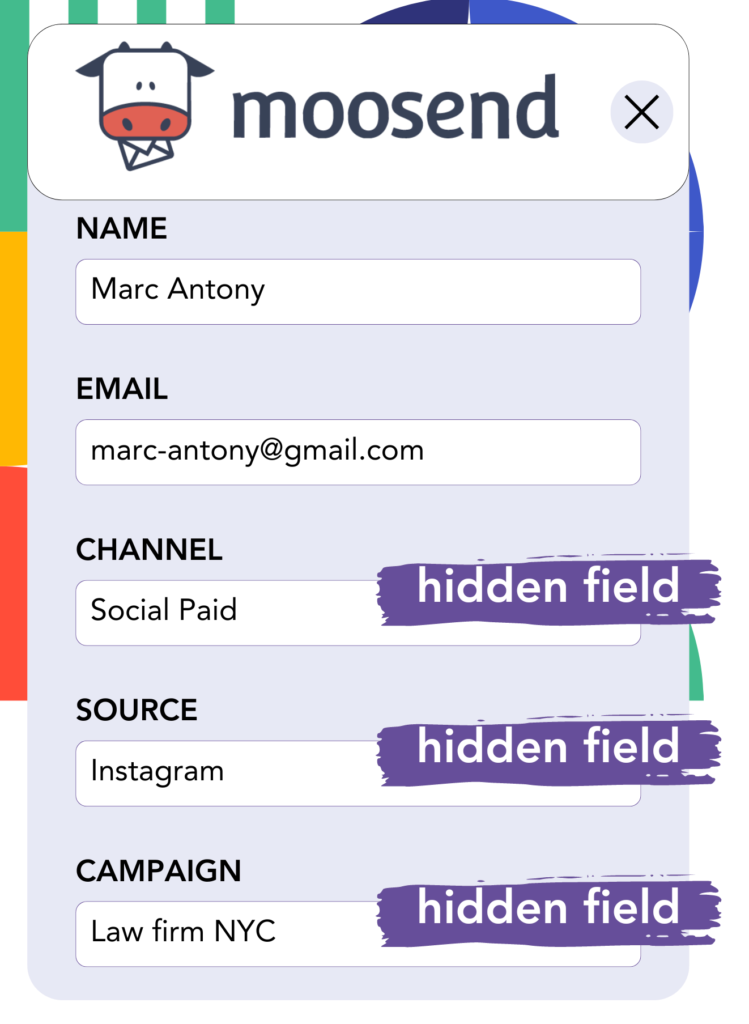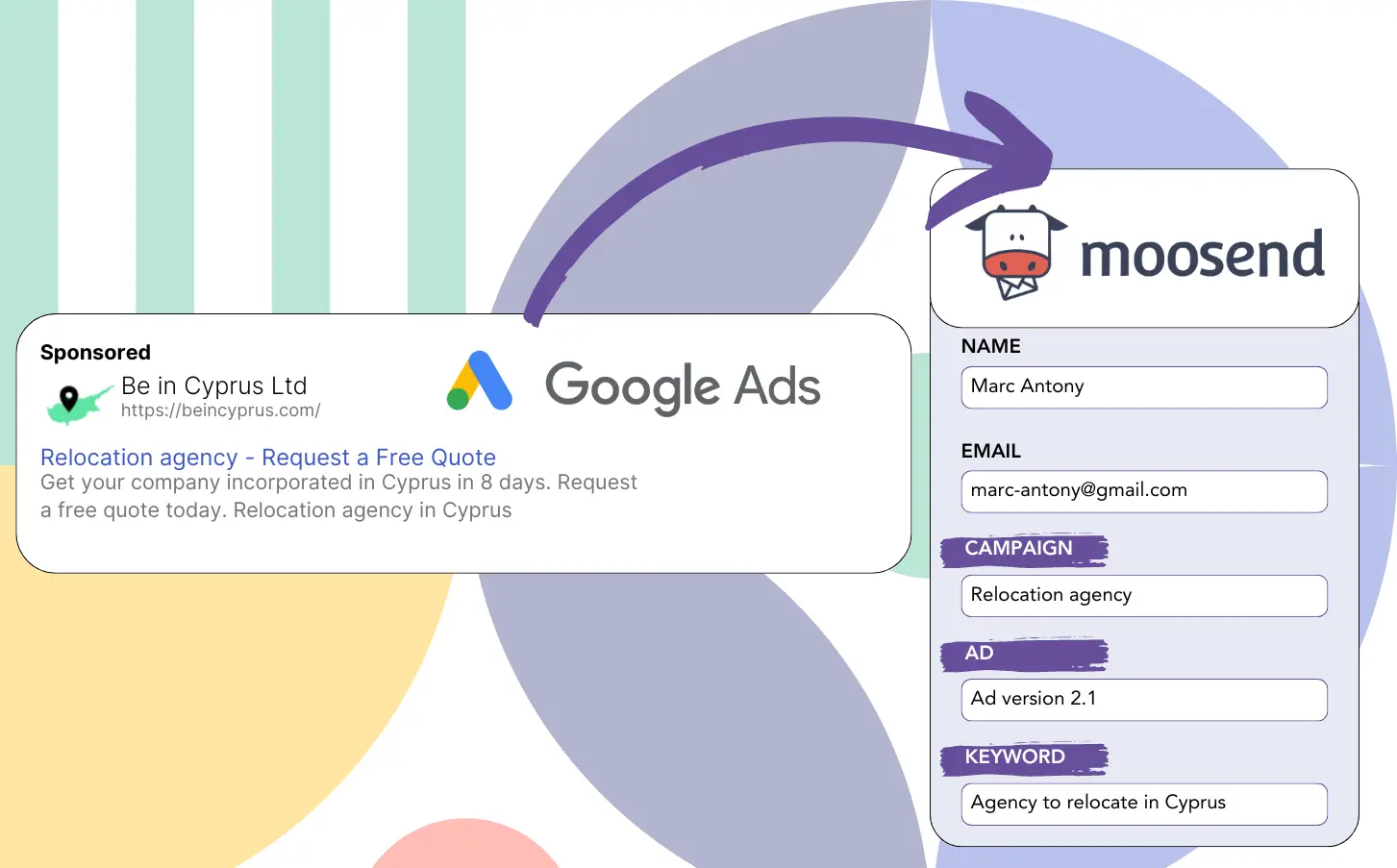Are you struggling to identifying the campaigns in Google Ads that produce your leads?
The problem is well-established; Google Ads shows lead counts by campaign, ad, or keyword but does not give information about each individual lead.
As a result, you cannot ascertain which campaign, ad, or keyword contributed to the leads that became customers.
Leadsources fixes this problem.
With Leadsources, you gain visibility into Google Ads data (campaign, ad, keyword, etc.) on a lead-by-lead basis.
Moosend enables you to log Google Ads data (campaign, ad, keyword, etc.) for each lead.
You can run reports like “Keywords that yielded the most leads” to guide decisions on which keywords to support or phase out.
Let’s dive in!
Capture Google Ads lead data in Moosend in 4 steps
Step 1: Add Leadsources in the head tag of your website

Sign up to Leadsources.io, and benefit from our 14-day free trial.
Add the Leadsources code in your website’s head tag. You don’t need any coding knowledge.
Simply follow this easy step-by-step guide.
Step 2: Add the UTM parameters to your Google Ads campaigns

Add the UTM parameters you need to track to all your Google Ads campaigns.
Here are the UTM parameters you could incorporate into your ad:
- UTM_source
- UTM_campaign
- UTM_term
- UTM_content
Alongside UTM parameters, Leadsources collects data on the channel, landing page, and landing page subfolder, giving you a complete lead-level picture.
Step 3: Add the hidden fields in Moosend

When visitors provide information in your Moosend (name, email, etc.), Leadsources auto-fills hidden fields with relevant Google Ads data (campaign, ad, keyword, landing page, etc.).
Follow the instructions in this guide to add hidden fields to your Moosend.
Leadsources will place the Google Ads data directly into your Moosend.
Step 4: Capture the Google Ads data in Moosend

Leadsources captures Google Ads data (campaign, ad, keyword, landing page, etc.) when a visitor clicks your ad and arrives at your page.
Leadsources automatically places Google Ads data into the hidden fields of your Moosend.
Following form submission, both the Google Ads data and form responses are delivered to the Moosend submissions page.
How does Leadsources work?
When the Leadsources code is inserted into the head tag of your website, it will capture Google Ads data (UTM parameters and referrer) on each visit.
It places the Google Ads data into the hidden fields of your Moosend.
Leadsources will use the referrer to collect data about visitors who come to your site without UTM parameters:
- Channel
- Source
- Campaign
- Landing page
- Landing page subfolder
This method helps you track important lead source information even when UTM parameters are not used, such as:
- On Google Search
- On your Instagram bio link
- On your social media posts
- Etc.
Lead data is often tracked by most tools only when UTM parameters are present (especially for paid and referral channels) – this is a drawback!
Leadsources tracks lead data for all channels, even if UTM parameters are absent:
- Organic Search
- Paid Search
- Organic Social
- Paid Social
- Referral
- Affiliate
- Display Advertising
- Direct Traffic
This facilitates the collection and centralization of all lead source data in one place.
How to run performance reports
Now that Google Ads data is stored in Moosend, you can develop performance reports such as:
- Leads per campaign
- Leads per ad
- Leads per keyword
- Etc.
This helps you manage your Google Ads expenditure with greater insight.
Let’s dive into the different reports you can create.
Lead performance reports
You can create reports that highlight the number of leads generated by:
- Channel
- Campaign
- Ad
- Keyword
- Landing page
- Landing page subfolder
Example #1
To generate a report named “Leads by Channel,” export the data from campaigns across different channels (SEO, PPC, email, etc.).

Example #2
After identifying the leading channel for lead generation (e.g., Google Ads), you can zoom in on that channel to examine lead counts for each individual ad campaign.

Example #3
Once the campaign with the highest number of leads is identified, you can further investigate by reviewing which specific keywords are creating these leads.

Sales performance report
Determining which ads and keywords bring in the most leads is key, but does this translate into higher revenue?
Sending Moosend submissions to a CRM (such as GoHighLevel) helps in generating detailed sales reports.
Example:
| Channels | Search Paid | Social Paid |
| Leads | 50 | 75 |
| Sales | 5 | 6 |
| Average order value | $150 | $100 |
| Revenue | $750 | $600 |
Following your Google and Facebook ad campaigns, you noted that Social Paid ads generated a greater number of leads than Search Paid ads.
Examining lead conversion data over several weeks, you found that Search Paid generated more revenue with fewer leads than Social Paid. This guides the decision to raise the budget for Search Paid campaigns.

